HMS Illustrious (Now incl photographs)
Join Date: Jul 2008
Location: NSW
Age: 64
Posts: 150
Likes: 0
Received 0 Likes
on
0 Posts
How much kinetic energy does an aircraft gain by using a "ski jump"?
...increases ability to handle ship pitch motion and reduces pilot handling workload.
Similarly, the pilot controls when to slam so he cannot be launched into a sea wall (as can occassionally happen with catapult launches) unless he does it himself, and thus he has more control over when the aeroplane leaves the deck. Normally, the pilot slams the throttle as the deck commences its bow down motion from its highest pitch. Simply by watching the motion during the start up you get an excellent feel for the cycle of the pitching motion. In the time it takes the engine to spool, the brakes to skid, the aeroplane to accelerate and approach the ski jump edge, the ship will have pitched through the trough and be passing the deck level attitude on its way up when the aeroplane becomes space borne. (stuff ups can be spectacular!)
However to use a ski jump you do need the aircraft to be fitted with an attitude control system that is effective at speeds below normal wing stall speeds.
Because the thrust level from a Harrier engine is so high (relatively), the aircraft quickly accelerates to flying speed and transitions away from the jet borne requirement. I understand the F35B will also have a form of reaction controls and some fairly clever electronic control inputs.
Hope this help?
Ski jump launch advantages apply to all aircraft to some extent. Even a conventional fighter can gain an advantage during take off with ski jump assistance, as can be witnessed when, with all the adrenalin pulsing through his/her veins, a newbie Harrier jock forgets to take the nozzles at the deck edge. In that instance, the aircraft nose will pitch up as the aeroplane flies away at high AOA. IE the aircraft will need to rotate to a nose attitude to gain the same effective lift as the jet borne component provided had the nozzles been in! Even though there is no reaction control available with the nozzles aft, the aeroplane will still be going up throughout the ski jump trajectory. It's just that the pilot will have startled themselves with the nose pitch.
All in all, ski jump launches are really easy. To my knowledge, no-one has dropped in the ocean due to bad ski jump technique. It is quite a forgivable way to go because you are physically forced upwards to begin with.
Coupled with vertical landings, aeroplanes become a lot less dependent on external machinery to stay operational.

Thread Starter
Join Date: Jul 2000
Location: London
Posts: 2,916
Likes: 0
Received 0 Likes
on
0 Posts
Aur
Sorry, I missed your question.
I didn't get any pics with Lossiemouth in the background.
_____________
Alongside in Oslo, 28 June 09

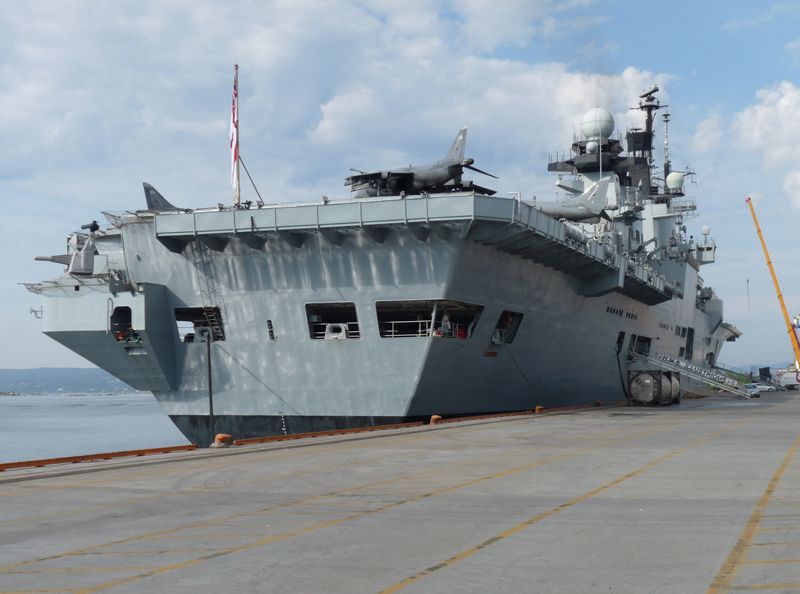
Entering the shipping lane from Oslo Harbour - passing the old Dyna Fyr lighthouse

(Some distortion - pic taken through a window)
Engine Control Room
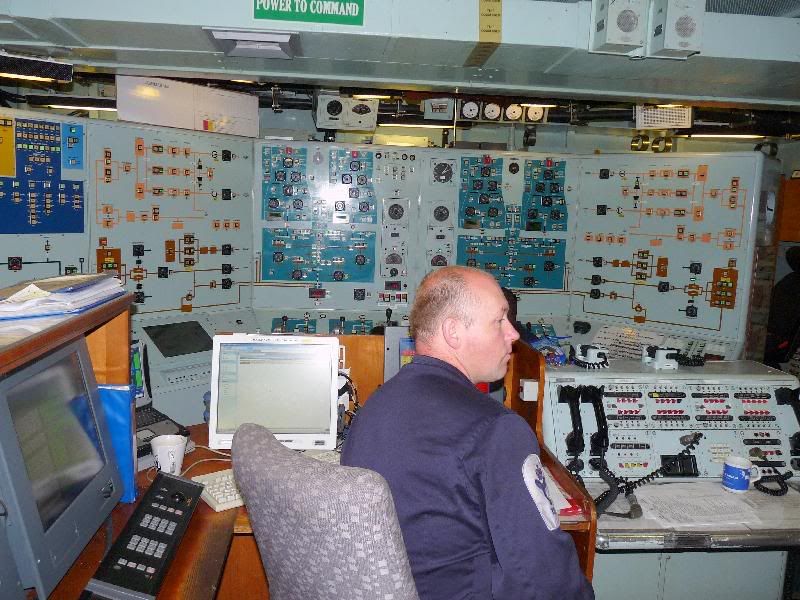
Starboard Engines
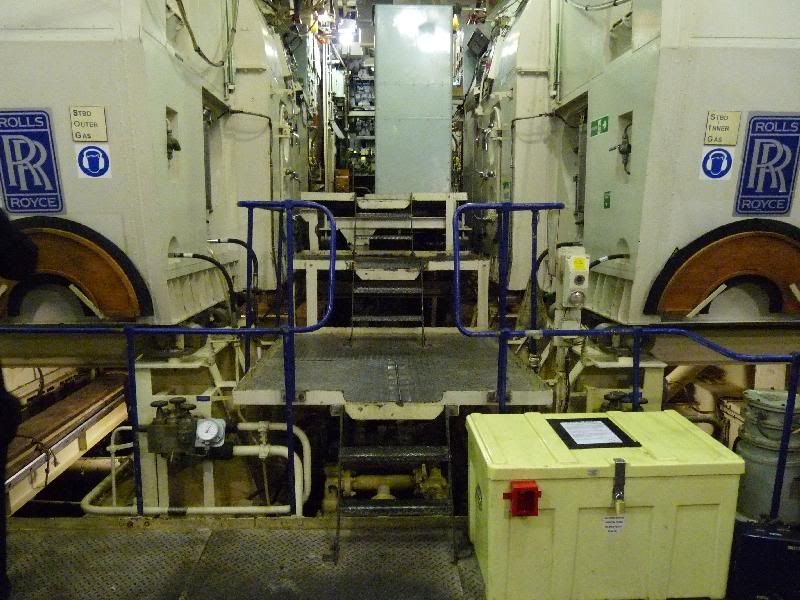
Marine version of Olympus engines (as used in Concorde)
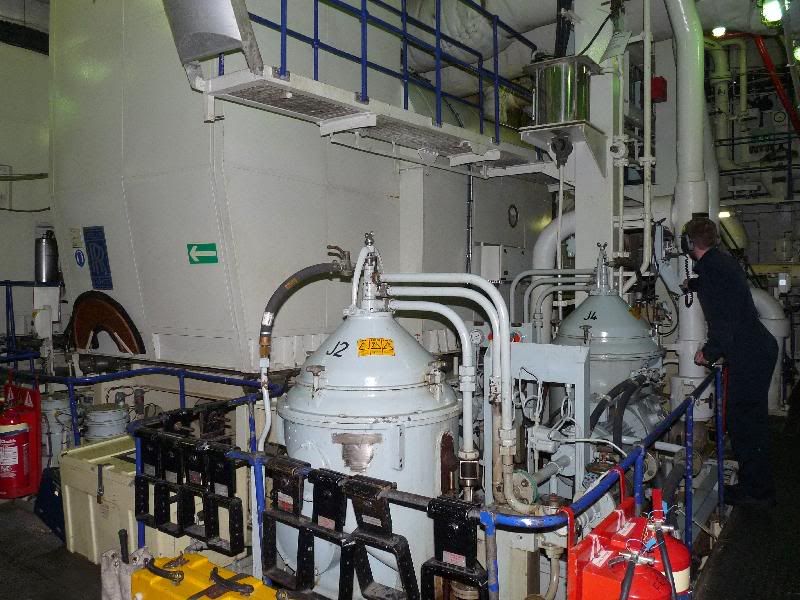
Harrier beyond forward lift
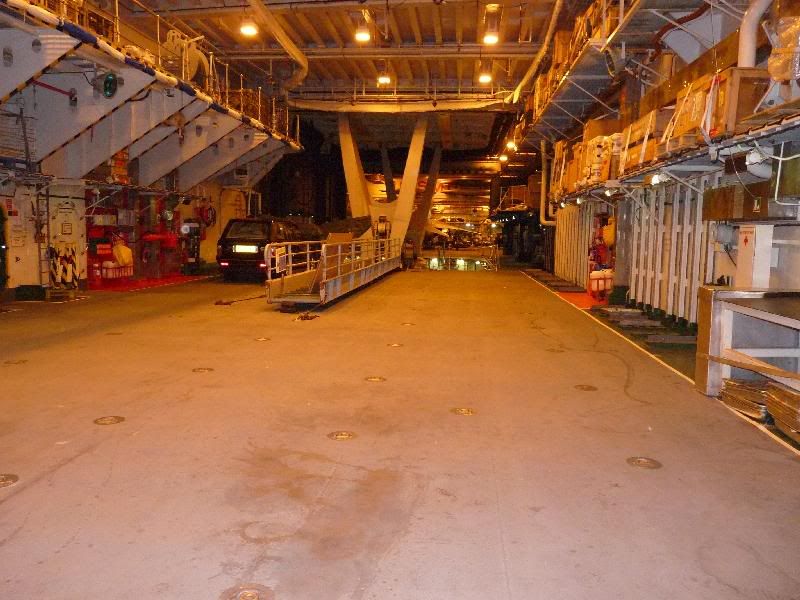
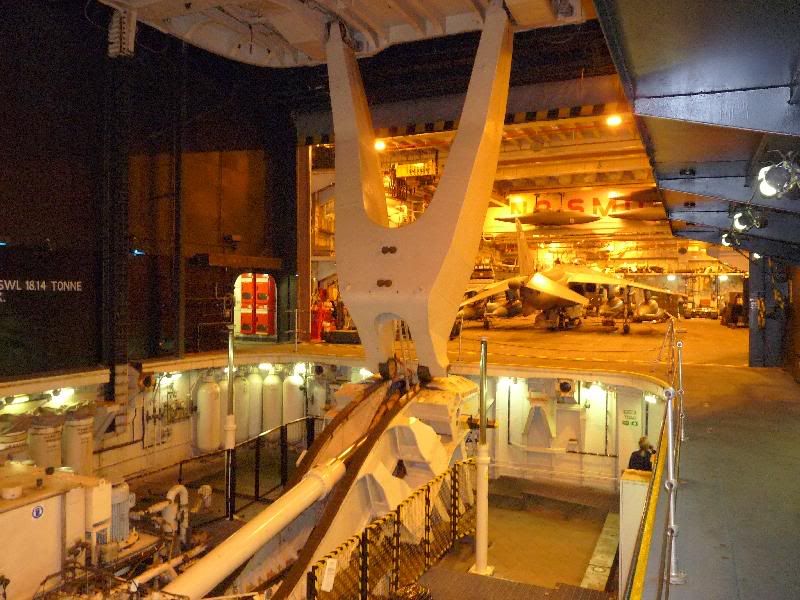
Admiral's Dining Room

FL
Sorry, I missed your question.
I didn't get any pics with Lossiemouth in the background.
_____________
Alongside in Oslo, 28 June 09


Entering the shipping lane from Oslo Harbour - passing the old Dyna Fyr lighthouse

(Some distortion - pic taken through a window)
Engine Control Room

Starboard Engines

Marine version of Olympus engines (as used in Concorde)

Harrier beyond forward lift


Admiral's Dining Room

FL
Last edited by Flying Lawyer; 21st Aug 2009 at 07:30.
Join Date: Mar 2006
Location: West Sussex
Posts: 1,771
Likes: 0
Received 0 Likes
on
0 Posts
I knew a Flight Test engineer, who when joining Dunsfold was asked to describe the effect of the ski - ramp; after a few mumblings, he said " well the thing goes ballistic, doesn't it ! ".
He was then accepted, that was the word they wanted to hear, and he proved a fine Flight Test engineer...
He was then accepted, that was the word they wanted to hear, and he proved a fine Flight Test engineer...




